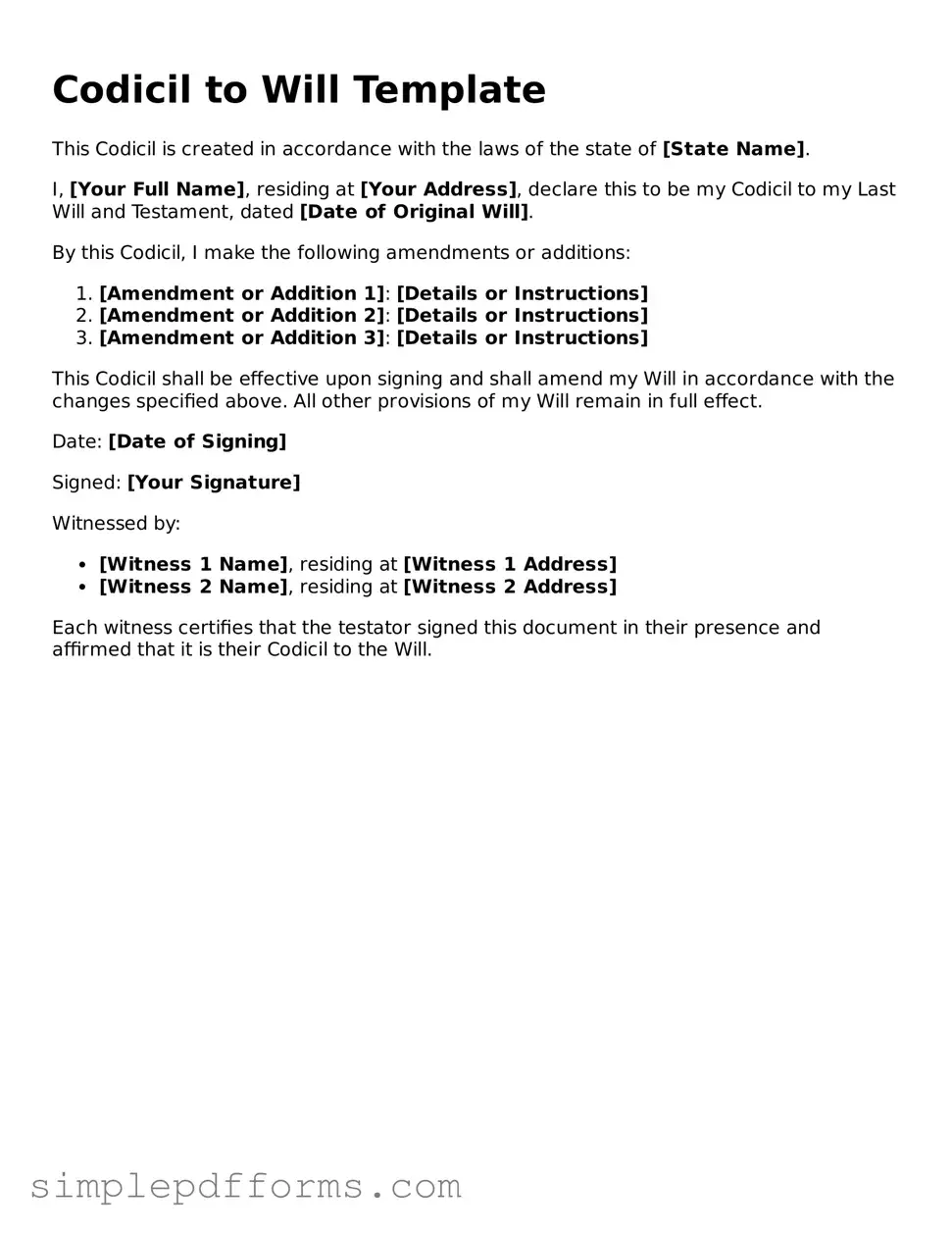Filling out a Codicil to Will form can be a straightforward process, but many individuals make common mistakes that can lead to complications later on. One frequent error is failing to clearly identify the original will. It's essential to reference the date of the original will, as this helps avoid confusion about which document is being amended.
Another mistake is not signing the codicil in the presence of witnesses. Most states require that a codicil be signed and witnessed to be legally valid. Skipping this step can render the codicil ineffective, leaving the original will unchanged.
People often overlook the importance of clarity in their language. Ambiguous wording can lead to misinterpretation of the intentions behind the codicil. It's vital to be specific about what changes are being made, whether it's altering beneficiaries or changing asset distributions.
Some individuals make the mistake of not dating the codicil. A date provides a clear timeline of when the changes were made, which can be crucial if there are disputes later. Without a date, it may be difficult to establish the order of documents.
Failing to revoke previous codicils is another common oversight. If a new codicil is created, it should explicitly state that any prior codicils are revoked. This helps prevent confusion over which document should be followed.
People sometimes neglect to keep the codicil in a safe place. After completing the form, it should be stored alongside the original will. If the codicil is misplaced or lost, the intended changes may not be honored.
Another mistake is not informing the relevant parties about the codicil. Beneficiaries and executors should be aware of any changes to avoid surprises later. Clear communication can help ensure that everyone understands the new intentions.
Some individuals forget to review the entire will after creating a codicil. Changes made in the codicil can affect other provisions in the will. A comprehensive review helps ensure that all documents work together harmoniously.
Finally, people may assume that a codicil is unnecessary for minor changes. Even small amendments should be documented properly. Failing to do so can lead to disputes or misunderstandings regarding the deceased's wishes.
